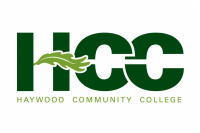Social problems permeate classrooms
 One in 30 American children are homeless, and, overwhelmingly, the two most common causes are economics and parental abuse. That’s the statistic I heard driving to school Monday morning. The outside temperature, 21 degrees, was a stark contrast to my car’s heated seats and comfort. In the three months since school began, I have known four students who have been without a place to stay. I hoped they were somewhere warm while I was listening to this radio report.
One in 30 American children are homeless, and, overwhelmingly, the two most common causes are economics and parental abuse. That’s the statistic I heard driving to school Monday morning. The outside temperature, 21 degrees, was a stark contrast to my car’s heated seats and comfort. In the three months since school began, I have known four students who have been without a place to stay. I hoped they were somewhere warm while I was listening to this radio report.
One girl I teach was homeless because of family issues in which a single adult parent could find no way to handle a rebellious teenager except to make her leave. Another has no adult in her life (except an ex-boyfriend’s mom) who can offer her a place to stay. Another’s father was so violent he had no choice but to remain at a playground over one weekend, and I don’t know where he’s staying now. I do know his jacket is thin. And the other’s homelessness began when his family had to sleep in their car after they were evicted from their trailer park.
If you’re not poor, the closest you come to feeling the singular instability of homelessness is when you travel, and perhaps there’s a glitch in your itinerary, so the hotel you thought you booked is filled; or your flight is cancelled in a city where you know no one and can’t speak the language; or you lose your tour group for more than a few hours. It creates a strange disequilibrium, a feeling of not belonging to any of the apartments your cab drives by, of not knowing where you will lay your head that night. The thing is, you know you will eventually return to your home, your own bed, and your safety.
I’m lucky my family was poor when I was a child; it gave me a glancing acquaintance with financial insecurity. I can’t specifically remember why there was a year when the only heat we had was a fireplace, but I do remember when my siblings and I arose for school each morning that winter, our clothes had been warmed on the hearth before we put them on. And while I don’t remember any birthday parties, I do remember having a hot breakfast, lunch money, and a nourishing supper at the end of the day.
Social workers do all they can to keep students safe and warm. Administrators buy coats and count on the assistance of churches and law enforcement. Businesses offer their resources. But how do we as individuals provide long-term stability for a child whose parents cannot? We often can’t. But we do what we can within our circle of influence; we do what we can for those we encounter along our path. For myself and other teachers, that raises the stakes. For those students who live in danger and uncertainty, our classrooms may be the only safety and stability they will experience today — and perhaps remember tomorrow.
(Dawn Gilchrist is a writer who teaches high school English in Swain County. She can be reached at This email address is being protected from spambots. You need JavaScript enabled to view it..)





